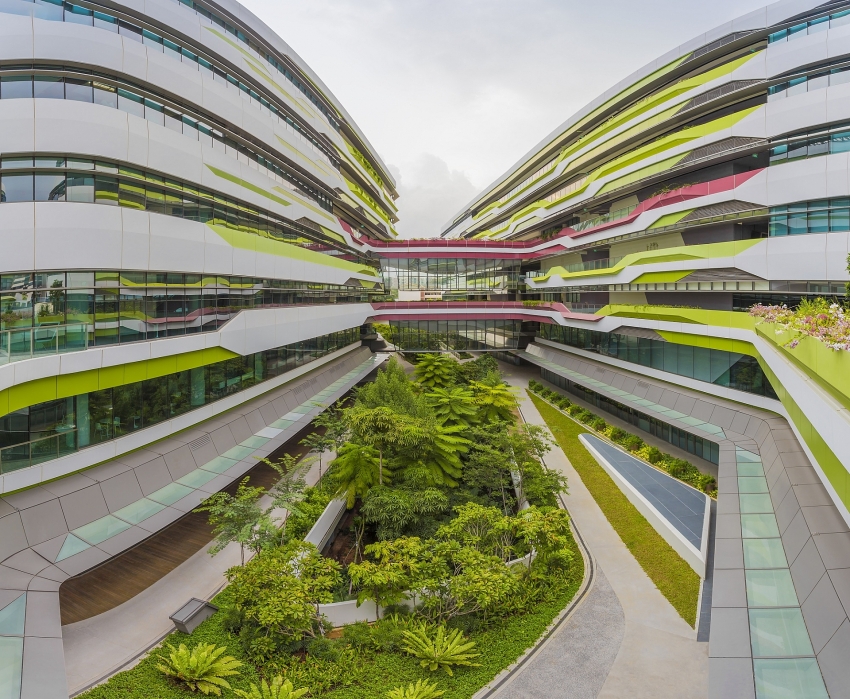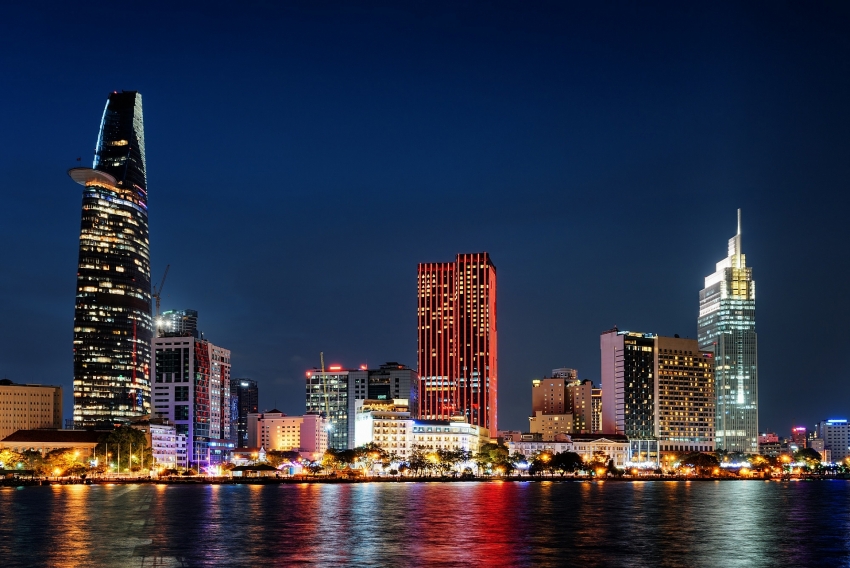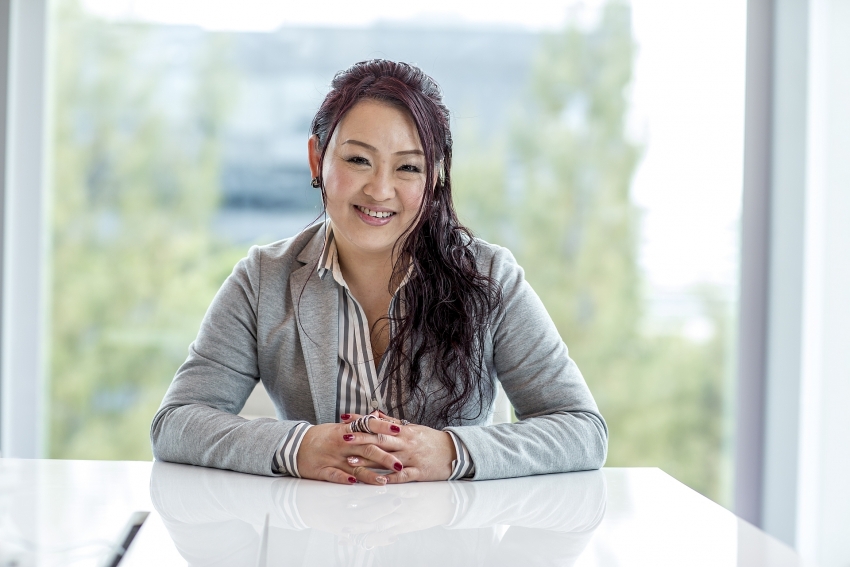Sustainability is business
 |
| Sustainability is business |
According to the UN Chronicle, energy consumption and air pollution are two of the most critical issues for the 3.5 billion people who live in urban communities. The World Health Organization calculates that nine out of 10 people around the world currently breathe unhealthy air, leading to pollution-related diseases that cause seven million deaths every year.
When it comes to energy – most of which is still generated from non-renewable sources – our cities are using more than ever before, with urban demand accounting for as much as 80 per cent of global production. At AkzoNobel, sustainability is business and business is sustainability.
The company takes our responsibility to depollute the paints and coatings in our urban environment seriously, and we are committed to applying these lessons throughout the supply chain to address both energy use and air quality.
AkzoNobel has made an ongoing commitment to invest in sustainability, innovation, and society as part of our vision for a cleaner and healthier world. The foundations of our work are built on a review of the risks and opportunities within the context of our key market segments to 2050.
This has demonstrated to us the need to leverage the latest knowledge across science and society, identify and mitigate our challenges, and develop strategies to make the future better.
For example, Southeast Asia is a market experiencing robust economic and population growth, which requires high levels of construction to meet the demands of a new middle class and rapid urbanisation. However, as our research identified, this also means that there is vast opportunity to pioneer new solutions.
Environmental targets
• Environmental: Achieve zero carbon emissions in our own operations; source 100 per cent renewable energy;
• Social: Reduce the use of volatile organic compounds and substances;
• Economic: Achieve zero waste and 100 per cent resource productivity in our operations.
Our renewable energy supply strategy has three focus areas: to protect our current renewable share; support cost-effective, large energy ventures; and explore commercially feasible on-site renewable energy generation.
A strategy for cleaner air
In all industries, environmental impact occurs throughout the manufacturing process, from R&D to the ultimate application of products.
When you look at the total carbon emissions in the supply chain, it becomes clear that the key to reducing our environmental impact is to work collaboratively.
To lead the change, the company has assembled a cohort of 4,000 scientists who will work closely with our global customer base to push for new, suitable, and sustainable solutions. Further, AkzoNobel is undertaking trials of our depolluting paint for launch in three megacities in India and Indonesia that struggle with severe pollution issues.
In the work to depollute air, the company can now use photocatalysis to trigger chemical reactions. In this process, photoactive titanium dioxide absorbs sunlight and reacts with oxygen and moisture to generate highly reactive free radicals, which in turn can contribute to the abatement of noxious emissions from motor vehicles, and decompose harmful gases such as nitrogen oxide, sulphur dioxide, and volatile organic compounds (VOCs).
Some impacts occur beyond the scope of our processes, with our suppliers and customers. For example, in paints and coatings more than 98 per cent of our carbon footprint comes from upstream (supplier) and downstream (customer) activities.
Upstream, AkzoNobel knows that the emissions from raw materials such as pigments, resins, and solvents are our greatest impact, so the company has joined forces with suppliers to drive the use of bio-based materials, recycled content, or raw materials produced with renewable energy. The company closely monitors the cradle-to-grave life cycle of our raw materials and finished products to reduce Volatile Organic Compounds, the impact of transportation and other environmental fallout.
Creating better energy
Energy is one of our single biggest expenditures – in some products, it accounts for as much as 80 per cent of our variable cost – and such overheads directly affect our bottom line.
 |
AkzoNobel
• 50 per cent of products now deliver sustainability benefits to customers;
• 20 per cent or more of our products deliver industry-leading sustainability benefits;
• 40 per cent renewable energy used;
• 100 per cent carbon-neutral target set for 2050;
• Consecutively ranked in Top 100 sustainable enterprises in Vietnam honoured by VCCI.
The company’s renewable energy supply strategy has three focus areas: to protect current renewable share; support cost-effective, large energy ventures; and explore commercially feasible on-site renewable energy generation.
By investing in these areas, AkzoNobel is securing profitability in the long term. However, in finding cost-effective solutions, the company needs to identify those that can withstand the test of time.
The company has leveraged the power of energy to support our sustainability programme and renewables now power 45 per cent of our requirements, meeting our 2020 target ahead of schedule. It found that in doing this, we have created direct benefits for our business by lowering costs and risk, and creating new value chains.
AkzoNobel draws power from solar, wind, natural gas, and biomass through multiple suppliers, meaning it can depend on an extremely reliable supply with low risk exposure to power shortages, rising oil prices, or changes in carbon pricing.
For example, the company is sourcing power direct from newly developed wind farms, together with Google, Philips, and DSM in the Netherlands.
Adding renewables to our profile also improves the sustainability of products, helping the company retain and acquire customers and find new ways of creating value for them.
In cases of oversupply, the company can use existing facilities to turn electricity into green hydrogen, which can be sold to produce chemicals or as a new product. The Dutch city of Groningen is already running a pilot with two hydrogen buses, supplied by AkzoNobel.
Renewable energy is characterised by variation in supply. As the company connects more wind parks and solar panels to our national grids, these swings will only become more severe and occur more often. Companies like AkzoNobel can play an important role in balancing these swings, and can even use them to create mutual benefits.
Case study:
Vietnam
Vietnam faces the challenge of sustainable development and urbanisation in a uniquely historic environment, home to many famous architectural structures. To overcome these, AkzoNobel offers a wide range of sustainable products in the local market, as well as practical support to those who live and work there.
In the first quarter of 2019, the company hosted two events on urban heritage preservation, which saw 450 experts discuss a masterplan for Vietnamese heritage. To support the next generation in taking over this work, AkzoNobel offers scholarships for architecture students and often host initiatives such as the Orange ASEAN Factory. AkzoNobel has also volunteered thousands of paints and working hours to repaint iconic structures, schools, urban alleys, and old apartment buildings.
Invested in tomorrow
Sustainability is not an afterthought, it is a way of doing business. It is woven into our DNA and is a powerful means of attracting customers.
To achieve carbon neutrality by 2050, economic, environmental, and social factors are accounted for in our daily work with customers, throughout the product development lifecycle and across the operations, and the company has three specific targets in place.
More than half of our products provide sustainability benefits to those who use them, but often the company must also engage in leading work beyond our own organisation. AkzoNobel allocated significant sums to the paints and coatings open innovation platform and a small yet innovative manufacturing acquisition in the UK. To drive the next wave of sustainable solutions, the company will make a further investment in innovation activities before the end of the current decade.
By 2020, the company is targeting 20 per cent of revenue from products that are more sustainable than those of our competitors, and up to 30 per cent more efficient in resource and energy use across the entire value chain. The company also aims to maintain eco-premium solutions at a sustainable 20 per cent of revenue through 2020. These investments are key to long-term sustainable value creation. The company knows that our in house innovation can achieve higher efficiency at lower impact, in line with our philosophy of delivering more with less.
Adding colour for the next generation
To ensure the best ideas are developed for the benefit of future generations, AkzoNobel must seek out and promote diversity of thought – and that can only be done by collaborating with diverse teams.
To drive the paints and coatings industry through its next phase of modernisation, AkzoNobel has created a new ecosystem for innovation by launching Paint the Future, an innovation challenge with an open invitation to collaborate and turn exciting potential into brilliant reality.
This year, the company will combine its global reach with the agility of thought present across the global startup and scale-up environment, to push the boundaries of what our industry can achieve.
The aim is to connect disruptive technologies to accelerate the dynamic world of paints and coatings, based on five pillars: smart application, enhanced functionality, circular solutions, life science infusion, and predictable performance.
In the first round, 1,150 members submitted 158 ideas: from turning waste into bio-oils and minerals to using bio-based methods to capture and convert the carbon dioxide from steelworks. Other ideas used renewable and long-lasting dyes from biomass and self-cleaning, air-purifying coatings.
Twenty-one outstanding startups were selected for the accelerator programme.
Now concluded, SAS Nanotechnologies (from the US), QLayers (Netherlands), Interface Polymers (UK), Apellix (US), and Alucha Recycling Technologies (Netherlands) were rewarded by AkzoNobel, while Octo (the Netherlands) took home the KPMG Scale-up Award.
We are committed to continued work with the recipients of these prizes, to pursue sustainable business opportunities through joint collaboration agreements.
In March this year, the company launched AkzoNobel Cares, an amalgamation of social programmes, including the Community Programme, Let’s Colour with many repainting projects, and the Education Fund, as well as smaller local activities.
Throughout this work, we aim to deliver shared value by helping communities, strengthening our reputation, and building the pride our team members hold in the company.
In 2017, Pamela Phua was appointed as cluster general director of Vietnam, Singapore, and Indochina, Decorative Paints South Asia. With 20 years of experience in the coatings industry, she has driven the business with new technology development and product implementation across the region, especially in Vietnam. Phua was instrumental in setting up the global research and laboratory operations for AkzoNobel Decorative Paints (Global Exterior Wall Paint Expertise Group) in 2011. In her global capacity, Pamela implements the functional and production innovation strategy for exterior wall paint. She spearheads the RD&I functional excellence, standards and capability, and the efficient delivery of processes as the approved standards and processes across the globe. Together with a special passion for sustainable development, she has led her teams to innovate paintings products and solutions through increasingly sustainable benefits for AkzoNobel customers and the environment. She also actively gets involved in sustainable activities in projects to create inspiring living spaces for local communities and to promote green architecture trends. |
What the stars mean:
★ Poor ★ ★ Promising ★★★ Good ★★★★ Very good ★★★★★ Exceptional
Related Contents
Latest News
More News
- Driving double-digit growth through green and circular transformation in Vietnam (December 17, 2025 | 09:00)
- Standard Chartered and ACCA deepen collaboration to develop Vietnam’s talent for a sustainable future (December 15, 2025 | 18:18)
- Schaeffler reports strong early output from Dong Nai solar project (December 12, 2025 | 15:16)
- Forestry conference highlights biodiversity and sustainability goals (December 09, 2025 | 13:35)
- Home Credit honoured among top 10 sustainable companies in trade and services (December 09, 2025 | 12:18)
- SCG and seven member companies honoured in Top 100 Sustainable Businesses 2025 (December 08, 2025 | 09:00)
- Nestlé Vietnam pioneers sustainable development and promotes business connections (December 06, 2025 | 12:09)
- CSI 2025 highlights rise of Vietnam’s green champions (December 06, 2025 | 09:00)
- Acecook Vietnam named among top 100 sustainable businesses (December 06, 2025 | 08:00)
- Vietnam’s forest carbon credits draw global interest (December 05, 2025 | 17:41)


 Tag:
Tag:



























 Mobile Version
Mobile Version